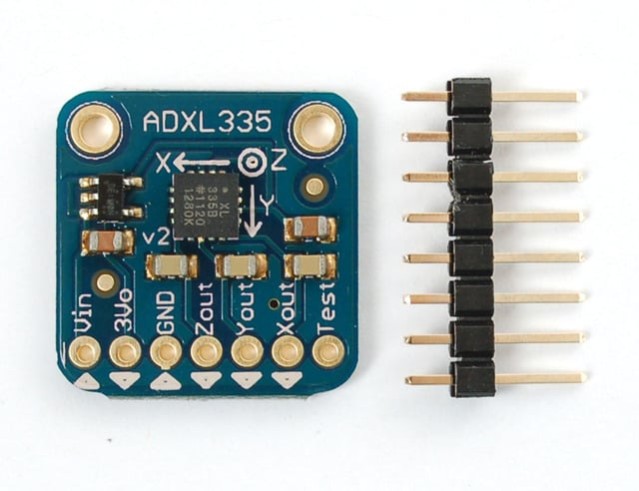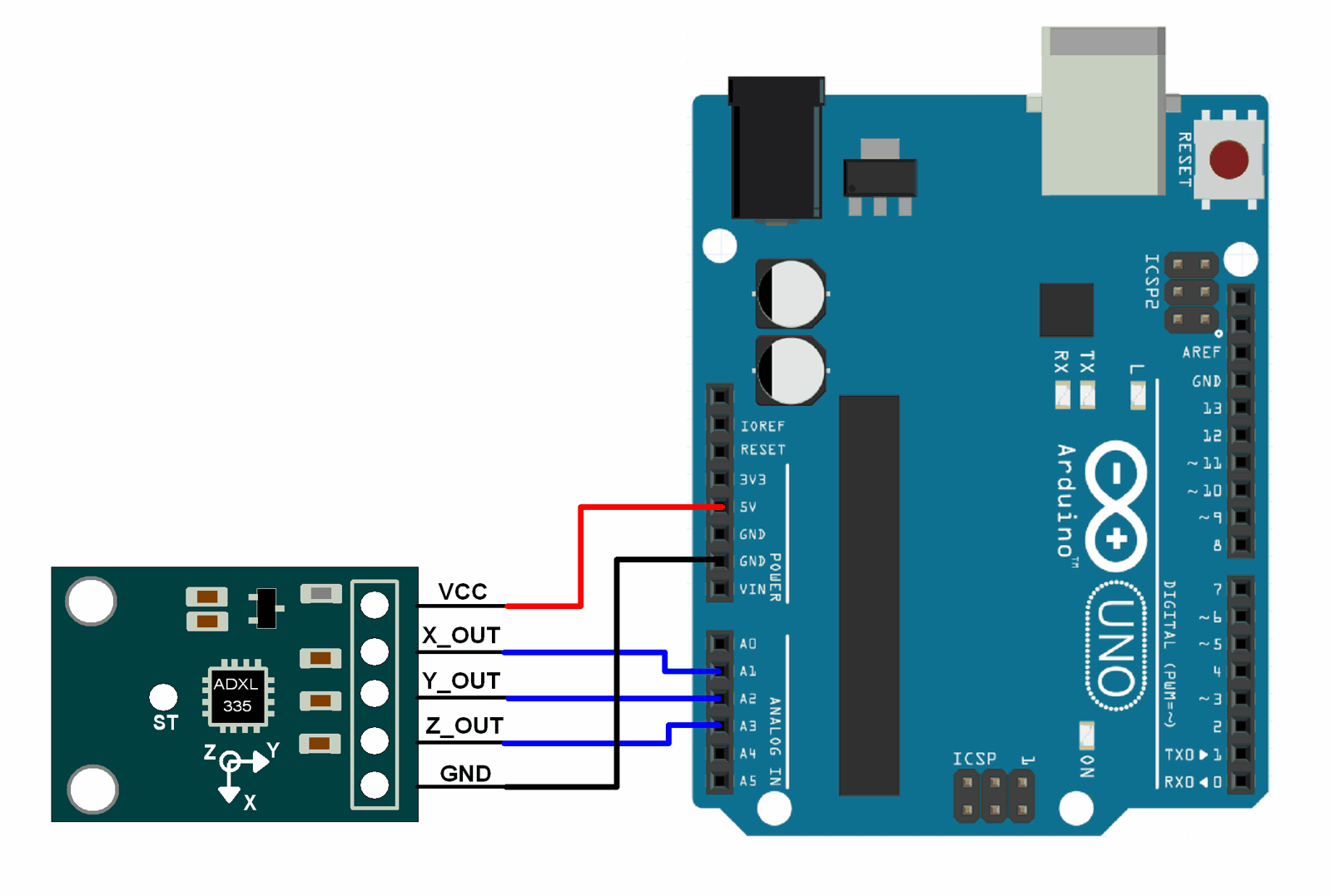








ADXL335 Triple-Axis Accelerometer
The ADXL335 is a small, thin, low power, complete 3-axis accelerometer with signal conditioned voltage outputs. The product measures acceleration with a minimum full-scale range of ±3 g.
₹ 352 ₹499
499



| Made In : | India |
Add FAQ
The ADXL series refers to a family of accelerometers produced by Analog Devices. These sensors are used to measure acceleration in various applications, including motion detection, tilt sensing, and vibration monitoring. Here’s an overview of the ADXL accelerometers:
ADXL Series Overview
Key Features:
-
Measurement Range:
- The ADXL series offers various models with different measurement ranges, typically from ±2g to ±16g. The "g" denotes the acceleration due to gravity.
-
Axes:
- Single-Axis: Measures acceleration along one axis.
- Dual-Axis: Measures acceleration along two perpendicular axes.
- Triple-Axis: Measures acceleration along three perpendicular axes, providing a full 3D acceleration measurement.
-
Output Type:
- Analog Output: Provides a continuous voltage output proportional to the measured acceleration.
- Digital Output: Some models provide a digital interface (e.g., I2C or SPI) for communication with microcontrollers.
-
Resolution:
- The resolution of the accelerometer depends on the model, but many ADXL sensors offer high-resolution measurements suitable for precise applications.
-
Sensitivity:
- Sensitivity varies based on the model and the measurement range, but ADXL accelerometers generally provide good sensitivity and accuracy for their specified ranges.
-
Power Supply:
- Typically operates on a low voltage, such as 3.3V or 5V, making them compatible with a wide range of microcontrollers and processors.
-
Package Types:
- ADXL accelerometers come in various package types, including surface-mount packages (SMD) and through-hole packages.
Common ADXL Models
-
ADXL345:
- Type: Triple-Axis Accelerometer
- Measurement Range: ±2g, ±4g, ±8g, ±16g
- Output: Digital (I2C/SPI)
- Features: High resolution, low noise, low power consumption, and configurable data rate.
-
ADXL335:
- Type: Triple-Axis Accelerometer
- Measurement Range: ±3g
- Output: Analog
- Features: Low power consumption, low noise, and wide operating voltage range.
-
ADXL321:
- Type: Dual-Axis Accelerometer
- Measurement Range: ±2g, ±4g, ±8g
- Output: Analog
- Features: Compact package, good sensitivity, and high resolution.
Applications:
- Motion Sensing: Detects motion or changes in orientation, used in gaming controllers, smartphones, and wearable devices.
- Tilt Sensing: Measures the tilt angle or inclination, useful in leveling devices or detecting orientation changes.
- Vibration Monitoring: Monitors vibrations in machinery, vehicles, or other equipment to detect anomalies or wear.
- Shock Detection: Detects sudden impacts or shocks, often used in security systems or impact-sensitive applications.
Example Connection with Arduino (for ADXL345):
Here’s how to connect and use an ADXL345 accelerometer with an Arduino:
Wiring Instructions:
- ADXL345 to Arduino:
- VCC (ADXL345) to 3.3V (Arduino) (or 5V if the module supports it).
- GND (ADXL345) to GND (Arduino).
- SDA (ADXL345) to A4 (Arduino Uno) or SDA (Arduino Mega)
- SCL (ADXL345) to A5 (Arduino Uno) or SCL (Arduino Mega)
- CS (ADXL345) to 3.3V (Arduino) (to select I2C mode).
- SDO (ADXL345) to GND (to set I2C address to 0x53).


#include
#include
// Create an object of the MPU6050 class
MPU6050 mpu;
// Variables for storing accelerometer and gyroscope data
int16_t ax, ay, az;
int16_t gx, gy, gz;
void setup() {
// Start the serial communication
Serial.begin(115200);
// Initialize the MPU6050
Wire.begin();
mpu.initialize();
// Check if MPU6050 is connected
if (mpu.testConnection()) {
Serial.println("MPU6050 connected successfully!");
} else {
Serial.println("MPU6050 connection failed!");
while (1);
}
}
void loop() {
// Get accelerometer and gyroscope data
mpu.getAcceleration(&ax, &ay, &az);
mpu.getRotation(&gx, &gy, &gz);
// Print the data to the Serial Monitor
Serial.print("Accelerometer X: ");
Serial.print(ax);
Serial.print(" Y: ");
Serial.print(ay);
Serial.print(" Z: ");
Serial.println(az);
Serial.print("Gyroscope X: ");
Serial.print(gx);
Serial.print(" Y: ");
Serial.print(gy);
Serial.print(" Z: ");
Serial.println(gz);
// Wait for a moment before printing again
delay(500);
}
0 Reviews For this Product












.jpg&width=225&quality=80)
